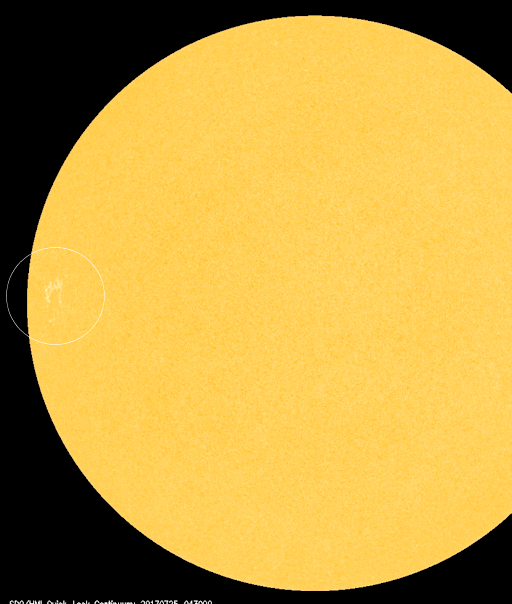This report from Belgium is important:
NOAA active region 2665 (Catania group 36) continued to produce B
flares and a couple of C flares. The strongest was a C2.3 flare peaking at
3:28UT.
As it is rotating towards the West limb the trailing spots have disappeared
from this region but especially the intermediate section of the region
appears to remain fairly dynamic.
Further C class flares are expected and there remains a potential for an M
flare from this region until it has well passed the West limb.
No Earth directed CMEs have been observed in coronagraph data.
Proton flux levels remained at background values. Strong activity from
region 2665 could possibly lead to an increase in proton flux levels in the
next few days until the region has well passed the West limb.Solar wind was marked by the passage of the July 14 CME. After the shock
arrival observed in the past reporting period, during this period total
magnetic field declined from 21nT at noon July 16 to around 10nT around
midnight when also density dropped back to background values. Solar wind
speed reached a maximum of over 600 km/s around 21:00UT before declining to
under 500km/s currently. The Northward component of the magnetic field
remained strongly negative (down to -15nT) until midnight before settling
at near zero values on July 17.
Over the next 24 hours we expect a recovery towards nominal solar wind
conditions with elevated values for magnetic field and Solar wind speed
slowly decaying.
